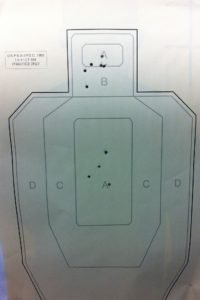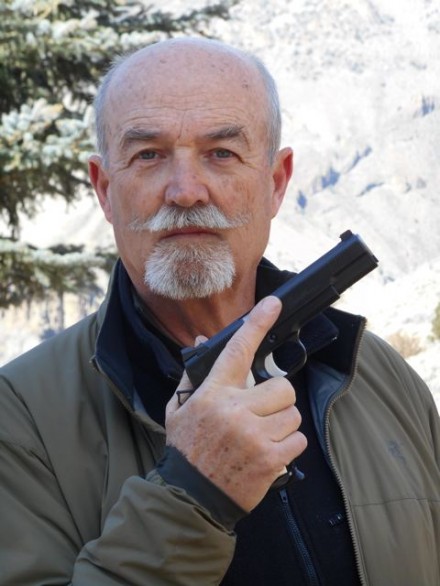Written by Greg Ellifritz
Legendary trainer Ken Hackathorn requires no introduction. As a founder of both IPSC and IDPA as well as a contract trainer for elite police and military groups around the world, his expertise is unmatched. What test does he use to determine if a student is adequately prepared to defensively use his concealed handgun? Read all about it in the linked article: Gunfighter Moment – Ken Hackathorn.
Ken calls his skill evaluation the “Wizard Drill.” The drill requires only five rounds, a shot timer, and an IDPA-style silhouette target. All stages begin with the firearm in a concealed holster. Each string of fire has a maximum time limit of 2.5 seconds.
Stage 1) 3 yards, one head shot strong hand only
Stage 2) 5 yards, one head shot using both hands on the gun
Stage 3) 7 yards, one head shot using both hands on the gun
Stage 4) 10 yards, two body shots using both hands on the gun.
At the completion of the exercise, you should have three head shots and two body shots on your target. Each string of fire must have started with the gun in the holster and must be completed within the 2.5 second time limit. Any misses or shots after the time limit indicate a failure of the drill. How do you think you would do?
I did this test last week with two of my carry guns. I first shot it with my Glock 19 carried in Spencer Keepers’ “Keeper” appendix carry holster concealed under a sweat shirt. I ran the drill a second time with my Glock 42 .380 carried in a DeSantis pocket holster.
The time limits were pretty generous, but I threw one head shot with the .380 at seven yards. Ken is right, this test is a challenge with pocket pistols! Good trigger control is an absolute necessity to pass.

My combined shots with Glock 19 and Glock 42. That low head shot? Don’t worry about that little guy!
Give this one a try. I think it’s a good evaluation for most of you. After you complete the test, turn the drill into a training exercise with the following steps:
1) If you failed the test, repeat each drill from the ready position (rather than drawing the gun) until you can successfully make all your hits in the time limit. When you can make the hits and times, try it from the holster again.
2) If you passed, repeat each stage multiple times by firing an entire magazine using the same time and range perimeters as the test specifies. Do one magazine’s worth of repetitions on the first stage, then move on to the second, etc. Depending on magazine capacity, this exercise turns a five round drill into a 30-60 round practice session.
3) If you make all your hits and times using a whole mag on each stage, try DOUBLING the number of rounds you fire while keeping the time limits the same. That should challenge even the more advanced shooters in the bunch.
Feel free to provide your results in the comments below. If you have any questions or problems, I’ll try to help you out.


